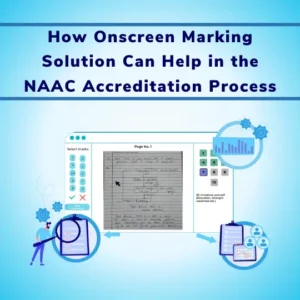The examination process is one of the key areas for any educational institution or university. It is a crucial evaluation process to grade students. In the case of theory exams, there is a traditional way of evaluating answer sheets. It is being followed by many universities and education institutes.
Physical handling of the answer sheet has many logistical and administrative activities. The following are some of the key stakeholders of the answer sheet evaluation and result processing.
Article Contents
1. Answer Sheet Masking Process
Prior to starting the activity of the answer sheet evaluation process, it is mandatory to mask the Roll No, Name of any individual information entered on the main page by the student.
It is an important activity to ensure that the identity of the student should remain hidden while evaluating the answer sheet. Most of the universities need to get an answer sheet on an individual basis and manually put masking paper on the main sheet of the answer sheet.
It is manual activity and takes a lot of time considering the volume of answer sheets available for the masking process.

Some of the institutions are moving towards having a bar code on the answer sheet. The bar code of the individual answer sheet should be mapped with a particular Roll Number and Subject.
The presence of only a bar code can ensure that the identity of the student is hidden from the evaluator. In order to implement a bar code, the education institution needs to ensure that the mapping of the bar code with a student is accurate.
QR Code:
It is a new technology and method to store information in a single image in the form of a QR code.
The institution can also have a mechanism where a QR code would have all the information of students including Name, Roll No, Subject Name, etc.
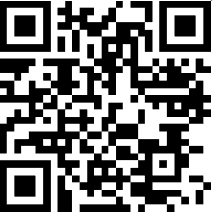
Shifting information to a Bar code/ QR code can help the masking process of the answer sheet.
2. Answer Sheet Evaluation
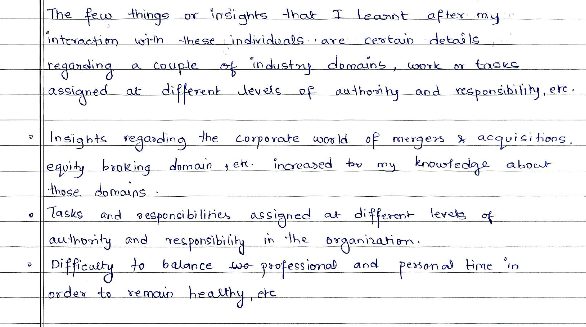
The first level of answer sheet evaluation is done by the professor or teacher in the respective subject.
Experts of a particular subject/topic are assigned the task of checking answer sheets. All the evaluators need to gather at the central location (typically the university’s central location/ hub) to complete the process.
Evaluators are assigned examination answer sheets. Each evaluator needs to physically access answer sheets and mark each page with annotations and assign marks according to answers written by the student.
The evaluator needs to keep track of question paper patterns and the total max marks associated with each question.
Evaluating physical answer sheets presents several challenges that must be addressed. One significant challenge is maintaining quality control.
For instance, if an answer booklet contains 16 pages and the evaluator only assesses 10 pages, the remaining six pages may not be properly evaluated.
Educational institutions or universities often struggle to monitor whether examiners have thoroughly reviewed every page of an answer sheet and assessed all the students’ answers.
The lack of quality control in manual answer sheet evaluation can lead to errors, prompting many students to request re-evaluation due to dissatisfaction with their marks. Students want assurance that examiners have evaluated their entire answers and that all pages of their answer sheets rece
An onscreen evaluation system can help to eliminate the physical handling of answer sheets. This system scans each answer sheet and it is made available for the onscreen marking process.
3. Calculation of Total Marks for the Answer Sheet
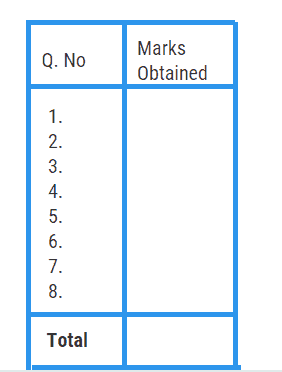
Each evaluator needs to keep track of the total no of questions attempted by the student.
If the exam pattern is to attempt any 3 out of 5 questions and the student has attempted all 5 questions, in such a scenario evaluator needs to consider the top 3 questions with max marks obtained by the student while calculating the total.
Manually calculating the total is a time-consuming task. The onscreen evaluation system automates to score calculation process. The system takes into consideration examination patterns, optional/ compulsory questions, student attempts, etc. The system automatically calculates the score.
It helps to speed up the answer sheet evaluation process along with total marks calculation.
The evaluator can evaluate a number of answer sheets compared to the traditional way of physically handling answer sheets using an onscreen marking system.
4. Data Entry of Marks Obtained by Individual in Particular Subject
After the answer sheet evaluation work is completed, the next important task is data entry of the marks obtained by an individual in the respective subjects.
The data entry person needs to manually enter marks in the system/ excel sheet for each individual answer sheet.
This data is useful for result generation and assigning the grade to students based on total marks obtained. The onscreen marking system can simplify this process as entire manual data entry work can be eliminated.
An additional benefit of on-screen marking is its capacity for API integration. This allows for automated result calculation and eliminates data entry tasks. Furthermore, with the aid of simple APIs, you can directly transfer and transmit result data into your system for purposes such as printing mark sheets, or declaring results.
Consequently, the entire data entry process and manual score management are rendered obsolete by the on-screen marking system.
The onscreen marking system can directly generate result records for each answer sheet evaluated.
5. Moderation/Rechecking of Answer Sheet
There are rules and regulations defined for each university where a certain percentage of mark sheets need to be re-evaluated by the moderator. Moderator is the person assigned to recheck some of the answer sheets already evaluated by the evaluator in the first step.
In this case, there is a second to the third level of physical handling of the answer sheet. Previously entered marks should be masked manually to avoid influence on the moderator from the first-level evaluator of the answer sheet.
The remaking of the answer sheet is manual work and it may take a lot of time. It adds up to delays in the evaluation of the answer sheet. There is the second level of data entry work to enter marks issued by the moderator.
There are various criteria set by the university/ education institution. In case of a large difference in marks issued by the evaluator and moderator, higher marks need to be assigned to the student. This criterion varies for each university as per their rules and regulations.
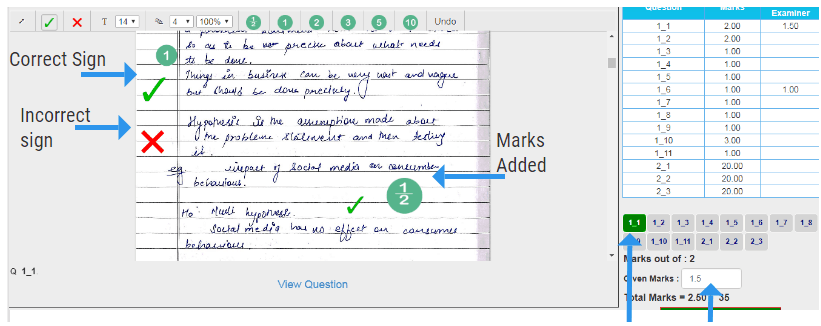
The onscreen marking system can eliminate this hassle as the moderator is assigned a fresh digital copy of the answer sheet. Scores are automatically calculated so final marks to the student can be assigned as per criteria set by the university/ education institution.
Moderation Criteria
The moderation process is an important aspect to scrutinize, and correct inconsistencies in the marks allotment process. Typically the role of the moderator is to recheck answer sheets that are already evaluated by one of the examiners.
While assigning answer sheets for moderation there are various criteria and algorithms used by the education institute and Universities.
Let’s see what the Rules for Moderation
If Marks are in the range of say 28% to 34% and passing is 35% then assign 100% of those answer scripts for moderation.
If marks are above 90% then assign 50% of the answer scripts for moderation
If marks are in the range of 50% to 80% then assign 10% of the random answer sheets from it for moderation
If marks are in the range of 35% to 50% then assign 5% of the answer scripts for moderation
Above mentioned rules are customs according to the rules of the educational institute. In the case of an onscreen evaluation system, you can easily configure such rules and randomly select answer sheets for moderation from the pool and range of percentage marks.
6. A student requesting a photocopy of the answer sheet
There are cases when a student is not happy about the total marks assigned to him/her in the examination result for a particular subject.
Students can make certain fee payments to get an individual photocopy of the answer sheet. This would be the fourth to fifth level of the physical handling of answer sheets. Someone needs to get a physical copy of the answer sheet from the storage, scan it, photocopy it and issue it to the respective student.
Imagine when thousands of students request a photocopy of the answer sheet and such thousands of mark sheets need to be photocopied and issued to students situated across multiple colleges/ institutes associated with the university.
This process involves many administrative activities along with paperwork.
The onscreen marking process can handle such a task in a simpler way.
If a student requests a photocopy of the evaluated answer sheet then using online software, evaluated answer sheet access can be issued to the student for a certain number of days.
Students can view answer sheet copies on desktop/ mobile using valid credentials. Entire manual work can be eliminated immediately.

7. Manual Calculation of Remuneration to Examiners, Moderators
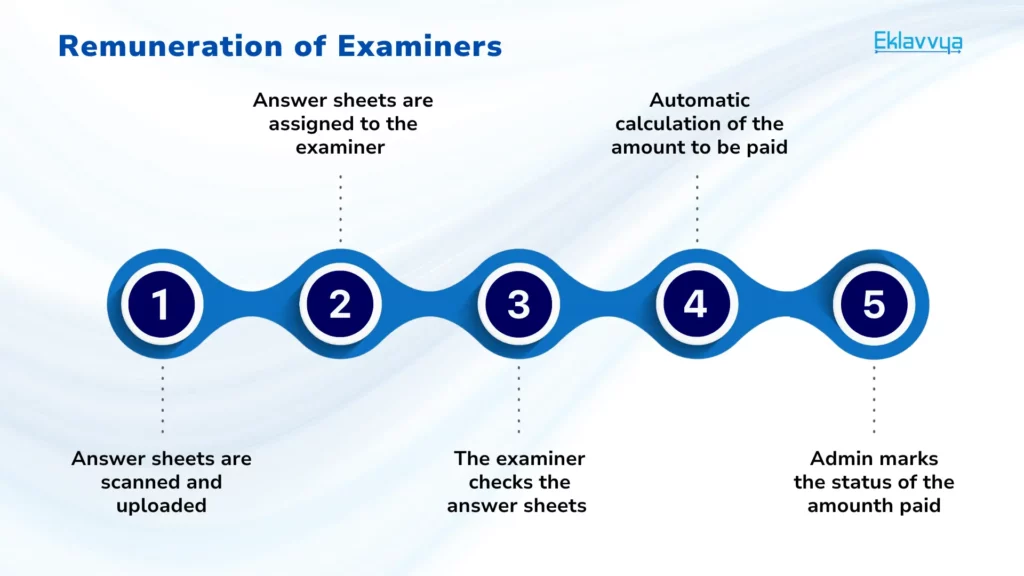
In a conventional examination setting, examiners or moderators typically assess physical answer sheets. Subsequently, someone must tally the number of sheets evaluated by various examiners or moderators. Based on this count, remuneration calculations are performed manually, and the corresponding amounts are deposited into the examiner or moderator’s bank account. This process is not only time-consuming but also prone to errors.
However, with the aid of an on-screen marking system, remuneration calculations can be automated, streamlining the overall process associated with compensating examiners or moderators. This approach not only saves time but also reduces the likelihood of errors.
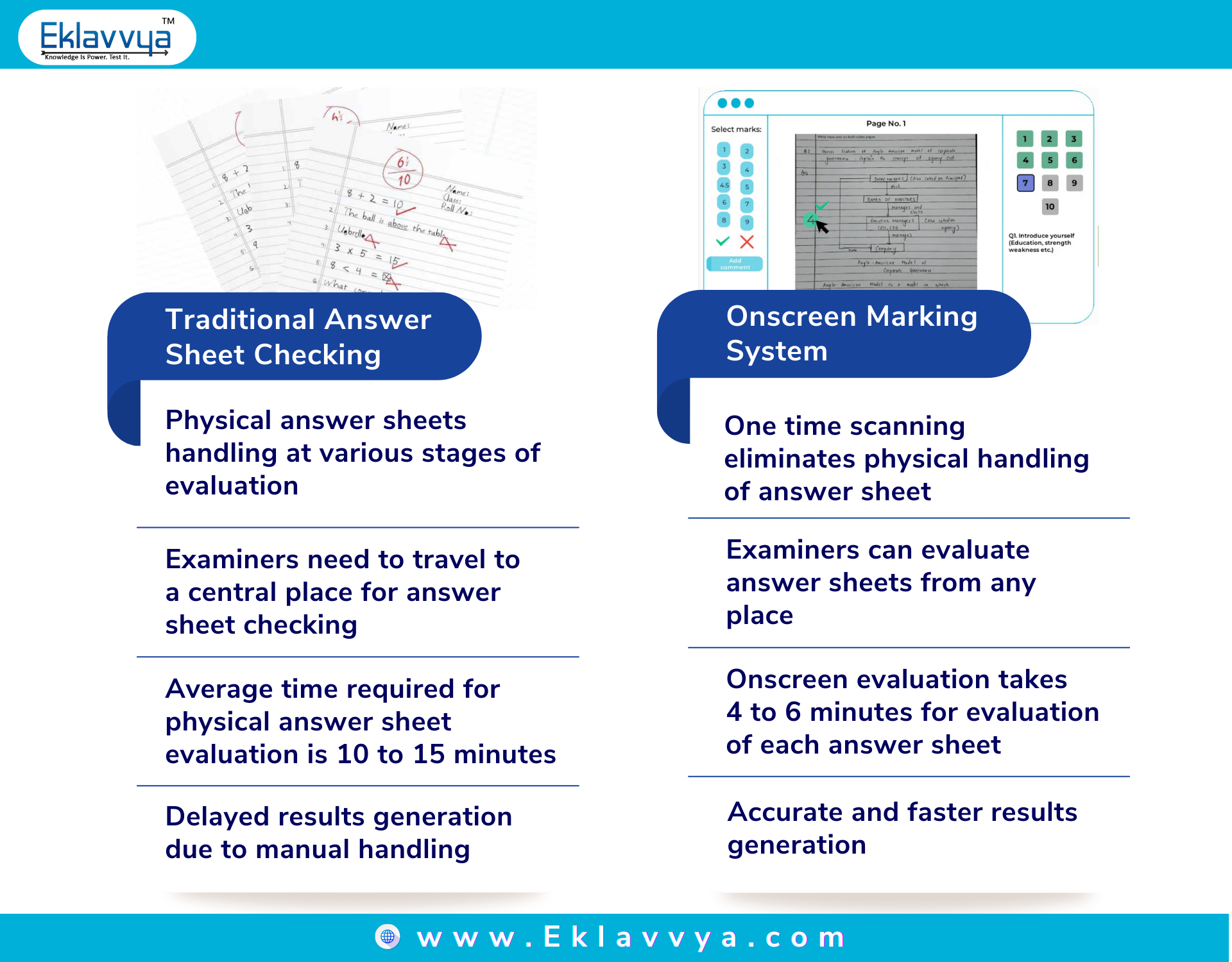
The online answer sheet evaluation can be done using an online interface, as these interfaces are secure portals, you need to provide your unique login credentials to access the answer sheets assigned to you by the admin. Once you get access to the portal using your credentials, you can start checking the answer sheets, during the checking process, the scanned copies of the answer sheets will be displayed to you, and you can proceed to awarding marks, also; you can provide feedback for each answer. Once the paper checking is completed, the marks get calculated automatically.
The on-screen evaluation is yet another name for the digital evaluation system, with on-screen evaluation, the evaluator can check the answer sheets using a device connected to the internet. On-screen evaluation provides certain advantages over the conventional answer sheet checking process, the on-screen evaluation is faster, traceable, and accurate. The moderation process can also be streamlined in a digital way using the on-screen evaluation system.
Each and every answer sheet is scanned using a super scanner, once these answer sheets are scanned, the answer sheets are imported into the digital evaluation system, and the evaluator can visit each assigned answer sheet, read the answers and award the marks. The evaluator can also provide feedback/comments on the answers written by the students.



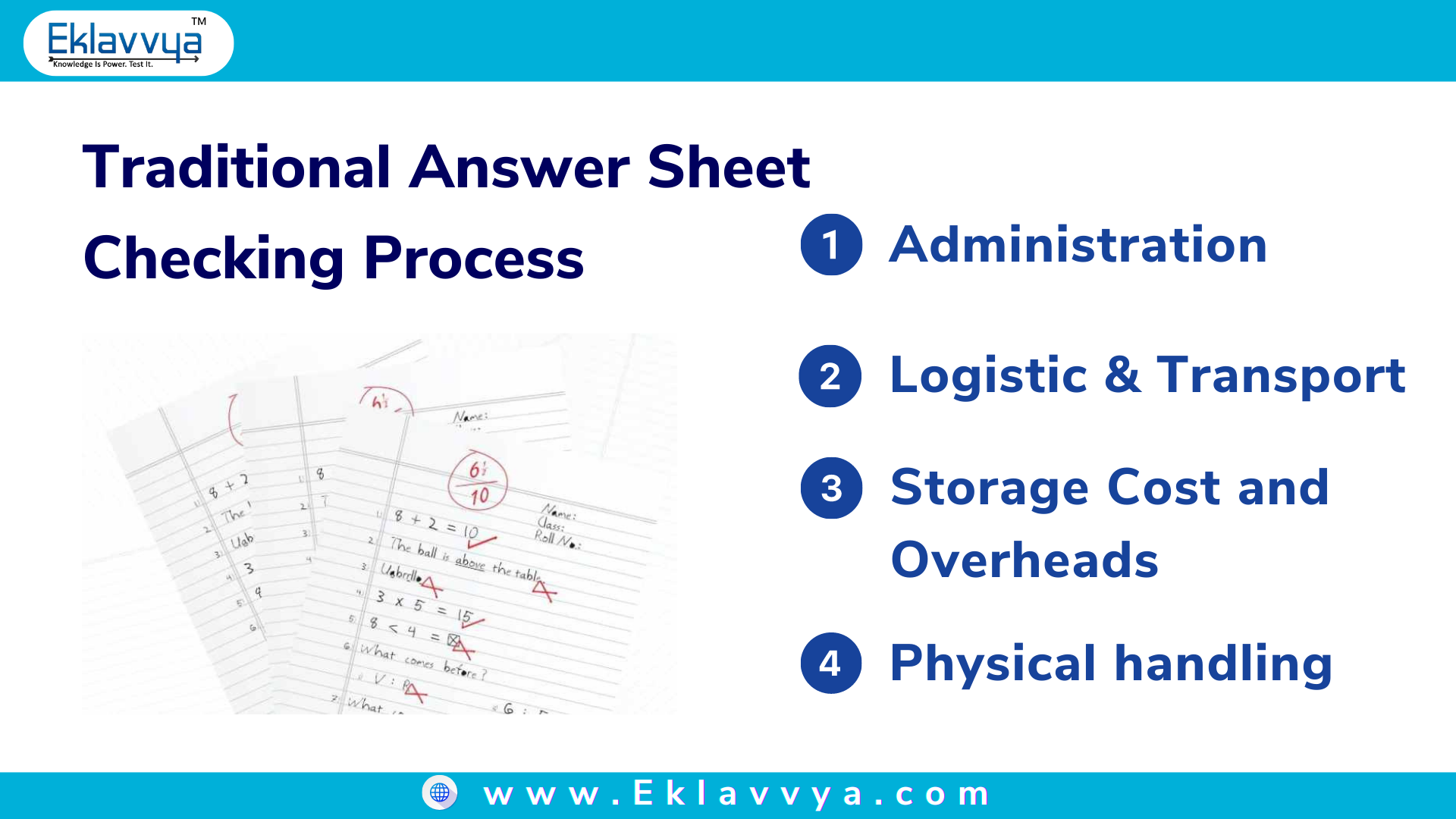
![How Government-Led Exams at 250+ Locations Are Setting New Standards of Integrity [Case Study]](https://www.eklavvya.com/blog/wp-content/uploads/2024/04/Enhancing-Exam-Integrity-Government-Certification-in-250-Locations-150x150.webp)
![Transforming Central Govt. Exams Evaluation: How Onscreen Marking is Leading the Charge [Case Study]](https://www.eklavvya.com/blog/wp-content/uploads/2024/04/How-Onscreen-Marking-Revolutionized-Central-Govt-Exams-Case-Study-1-150x150.webp)


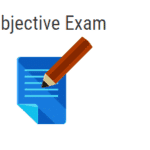
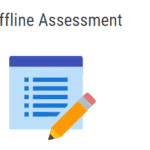











![How Onscreen Marking Revolutionized Central Govt Exams [Case Study]](https://www.eklavvya.com/blog/wp-content/uploads/2024/04/How-Onscreen-Marking-Revolutionized-Central-Govt-Exams-Case-Study-1-300x300.webp)

